Choosing Your Puppy

Choosing a puppy is a very important decision, and everyone who lives in the household should agree before any puppy is brought into the home. If the puppy is to truly become a member of the family, then all family members will need to be involved in training. Before you choose your puppy (usually at eight weeks of age), you need to know:
· How to evaluate and select a good breeder
· How to evaluate and select a good puppy and specifically, how to assess your puppy's behavioral development.
Also, you must keep in mind that there are no perfect puppies. In this chapter we recommend giving careful consideration to where, when and how you choose your puppy, but please remember, any puppy you pick will need to be trained if you want to live with a well-behaved, friendly and mannerly dog.
In preparation for household living, the litter of puppies must have been raised indoors and around people and not in some secluded backyard or fancy kennel. If raised in kennel-isolation, your prospective puppy's social and mental development is already likely to be severely retarded and sadly, you will be playing catch-up for the rest of her life. Your puppy will require remedial socialization and training for a long time to come.
By eight weeks of age:
· Your puppy should already have been handled by many people, especially men, children, and strangers
· Your puppy must have become thoroughly accustomed to a home physical environment, especially to all sorts of potentially scary noises
· Your puppy's errorless housetraining and chewtoy-training should be underway
· Your puppy should already have a rudimentary understanding of basic manners. At the very least, your puppy should come, sit, lie down, and roll over when requested.
Make absolutely certain the puppies have been raised indoors in close contact with people who have devoted lots of time to their education.
If a dog is expected to live in a household with people, obviously she needs to have been raised in a household with people. Your puppy needs to be prepared for the clamor of everyday domestic living: the noise of the vacuum cleaner, pots and pans dropping in the kitchen, football games screaming on the television, children crying, and adults arguing. Exposure to such stimuli while her eyes and ears are still developing allows the puppy (with her blurred vision and muffled hearing) to gradually become accustomed to sights and sounds that might otherwise frighten her when older.
There is not much point in choosing a puppy that has been raised in the relative social isolation of a backyard kennel, basement, barn, or garage, where there is precious little opportunity for interaction with people and where a puppy has become accustomed to soiling her living area and yapping a lot. Puppies raised in physical seclusion and partial social isolation are hardly prepared for household living, and they are certainly not prepared for encounters with children or men. Backyard- and kennel-raised puppies are certainly not pet-quality dogs; they are livestock on par with veal calves and battery hens. Look elsewhere! Look for litters born and raised indoors — in a kitchen or living room.
If you want a companion dog to share your home, she obviously should have been raised in a home, not in a cage or a kennel.
An essential ingredient of puppy husbandry is regular (several times a day) handling, gentling, and calming by a wide variety of people, especially children, men, and strangers. These exercises are especially important during the early weeks and especially with those breeds that are notoriously tricky when handled by strangers — that is, several Asian breeds, plus many herding, working, toy and terrier breeds — in other words, most breeds of dog!
It is so important that dogs enjoy interacting with people and being hugged and handled, especially by children, men, and strangers. Early socialization easily prevents serious adult problems.
If you want a cuddly adult dog, he needs to have been cuddled regularly as a puppy. Certainly, neonatal pups are pretty fragile and helpless critters; they can barely walk and they have a number of sensory constraints. But they still need to be socialized. Neonatal pups are extremely sensitive and impressionable, and this is the very best time to accustom them to being handled. Neonatal puppies may not see or hear very well, but they can smell and feel. Of course, neonatal and early puppy socialization, being of paramount importance, must be done gently and carefully.
The puppy should be fully desensitized to sounds before he is four weeks old. Likewise, his housetraining program should be well underway, his favorite toy should be a chewtoy (stuffed with puppy chow), and he should happily and eagerly come, follow, sit, lie down, and roll over when requested. If these are not so, either your puppy is a slow learner or he has had a poor teacher. In either case, look elsewhere.
If You Really Want a Challenge
If you really want to set yourself a housetraining challenge, buy a three-month-old puppy from a kennel or pet store window littered with shredded paper and straw with no specific toilet area. This puppy has been trained to eliminate anywhere, anytime. And that's exactly what she will do when you get her home. You'll be cleaning up urine and feces for a very long time!
Adapted from BEFORE You Get Your Puppy by Dr. Ian Dunbar
Which Type of Dog?
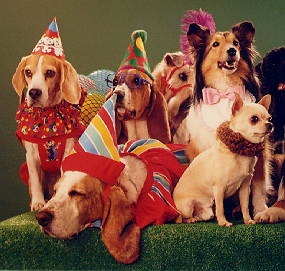
There are many considerations when choosing a puppy, including which breed or type, and the optimal age of acquisition. Obviously, you want to choose a dog that is best suited to you and your lifestyle. Rather than listing my preferences, I will discuss some of the more important guidelines.
First, please do not kid yourself that all you have to do is select the "perfect" breed and the "perfect" individual puppy and he will automatically grow up into the "perfect" adult dog. Any puppy can become a marvelous companion if appropriately socialized and trained. And, no matter what his breed or breeding, any puppy can become a doggy delinquent if not properly socialized and trained. Please make an intelligent, researched choice when selecting your puppy, but remember: appropriate socialization and training is the single biggest factor determining how closely the dog will approach your view of perfection in adulthood.
Second, seek advice from the best sources. Common mistakes are to take breed advice from veterinarians, health advice from breeders, and all-important behavior and training advice from veterinarians, breeders, and pet-store personnel. The best plan is to seek training and behavior advice from trainers and behavior counselors, health advice from veterinarians, breed advice from breeders, and product advice from pet-store personnel. And if you really want to know what's going on, check out a local puppy class and chat with the owners; they'll give you the cold, hard facts regarding what it's really like to live with a puppy.
Third, seek advice from several sources and evaluate all advice carefully. Apply the common sense principle: does it make sense to you? Is the advice relevant to your family and your lifestyle? Whereas most advice is sound, some can be irrelevant, hypocritical, preachy or questionable. And occasionally, "advice" can be just downright bad.
Example 1: One breeder told a couple they could not buy a puppy unless they had a fenced yard and one of them was home all day. Yet the breeder herself had no fenced yard and her twenty or so dogs lived in crates in a kennel a good forty yards away from her house and any hope of human companionship. Duh!?!
Example 2: Many people are advised not to get a large dog if they live in an apartment. On the contrary! As long as they receive regular walks, large dogs make wonderful apartment companions. Compared with smaller dogs, large dogs often settle down better and bark less. Many little dogs exasperate owners and neighbors by being active and noisy, and running amuck and treating apartment furniture like an agility course. Smaller dogs make wonderful apartment companions, however, so long as they are trained to settle down and shush.
Example 3: Many veterinarians advise that Golden Retrievers and Labrador Retrievers are the best dogs with children. All breeds of dog can make good companions for children, provided that they have been trained how to act around children, and provided that the children have been taught how to act around dogs! Otherwise, all dogs — including Goldens and Labs — are likely to be frightened and irritated by children, or excited and incited by their antics.
Remember, you are selecting a puppy to live with you for a good long time. Choosing a puppy to share your life is a very personal choice — your choice. You will save yourself a lot of unnecessary problems and heartbreak if your choice is an informed and educated one.
In reality, though, people seldom pay heed to well-meaning advice and usually end up choosing with heart instead of head. Indeed, many people end up choosing a dog along the same lines as they might choose a lifelong human companion: based on coat color, conformation, and cuteness. But regardless of the many reasons for selecting a particular puppy — whether pedigree, conformation, cuteness, or general health — the success of the endeavor ultimately depends almost entirely on the pup's education regarding appropriate behavior and training.
Adapted from BEFORE You Get Your Puppy by Dr. Ian Dunbar
Another great way to find the dog of your dreams is to use the Dogtime matchup.
Mixed Breed or Pure Breed?
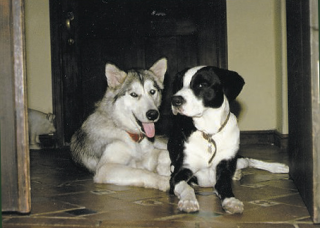
This decision is a personal choice that only you can make. The most obvious difference is that pure breeds are more predictable in terms of looks and behavior, whereas each mixed breed is utterly unique — one of a kind.
Regardless of your personal preference for attractiveness, attentiveness, and activity, you would do well to consider general health and life expectancy. By and large, due to lack of inbreeding, mixed breeds are healthier genetic stock; they tend to live longer and have fewer health problems. On the other hand, at a pure-breed kennel, it is possible to check out the friendliness, basic manners, general health, and life expectancy of several generations of your prospective puppy's forebears.
Which Breed?
A Border Collie or a French Bulldog? A Golden Retriever or a Belgian Malinois? I am strongly opposed to suggesting breeds for people. Recommending specific breeds may sound like helpful and harmless advice, but it is insidiously dangerous and not in the best interests of dogs or of dog-owning families. Advice either for or against specific breeds often leads owners to believe that training is either unnecessary or impossible. Thus many poor dogs grow up without an education.
Breed recommendations often lead unsuspecting owners to believe that once they have selected the right breed, there is nothing more to do. Thinking they have the best possible breed, many owners suffer the misconception that training is unnecessary and so don't bother. This, of course, is when things start to go downhill.
Even more disturbing, when certain breeds are recommended, other breeds are automatically being advised against. "Experts" often suggest that certain breeds are too big, too small, too active, too lethargic, too fast, too slow, too smart, or too dumb, and therefore too difficult to train. Well, we know that regardless of helpful "advice," people are probably going to pick the breed they wanted in the first place. But now they may feel disinclined to train the puppy, feeling that the process is going to be difficult and time consuming. Furthermore, owners may rationalize their negligence by citing any one of the pack of convenient excuses listed above.
Some people like to rank order breeds in terms of supposed relative intelligence, citing Border Collies and Golden Retrievers as being smart and Bassett Hounds, Coonhounds, Irish Wolfhounds and Afghan Hounds as being not so smart. Certainly, analyzing differential responses to cognitive tests and puzzles is interesting, but generalizing about breed intelligence can have sad repercussions. For example, a Border Collie owner didn’t bother training their puppy because they thought it was so smart that training was unnecessary. And an Afghan Hound owner didn’t bother training their puppy because they thought it lacked smarts and that training would be impossible.
Breed is a very personal choice. Choose the breed you like, investigate breed-specific qualities and problems, and then research the best way to raise and train your pup. If you select what others consider an easy breed to raise and train, train your pup so that he becomes the very best individual — an ambassador — of that breed. And if you select a breed that some people consider difficult to raise and train, train him, train him, and train him, so that he becomes the very best example — an ambassador — of that breed.
Regardless of your eventual choice, and certainly once you have made it, success or failure is now entirely in your hands. Your puppy's behavior and temperament now depend completely on good husbandry and training.
When evaluating different breeds, the good points are obvious. What you need to find out are the breed's bad points. You need to investigate potential breed-specific (or line-specific) problems and to know how to deal with them. If you want to find out more about a specific breed, find at least six adult dogs of the breed you have selected and talk to their owners at length, but most importantly, meet the dogs! Examine and handle them; play with them and work them. See if the dogs welcome being petted by a stranger — you. Will they sit? Do they walk nicely on leash? Are they quiet or noisy? Are they calm and collected, or are they hyperactive and rambunctious? Can you examine their ears, eyes, and rear end? Can you open their muzzle? Can you get them to roll over? Are the owners' houses and gardens still in good condition? And most important, do the dogs like people and other dogs?
Learn what to expect, because when your eight-week-old puppy comes home, he will grow up with frightening speed. Indeed, in just four month’s time, your pup will develop into a six-month-old adolescent that has gained almost adult size, strength, and speed, while at the same time retaining many puppy constraints on learning. Your puppy has so much to learn before he collides with impending adolescence.
In terms of personality, behavior, and temperament, please be aware that dogs of the same breed may show considerable variation. If you have siblings or more than one child you probably appreciate the incredible range of temperaments and personalities of children from the same parents. Dogs are similar. Indeed, there may be as much variation of behavior among individuals of the same litter as there is among dogs of different breeds.
Environmental influences (socialization and training) exert a far greater impact on desired domestic behavior and temperament than genetic heredity. For example, the temperamental differences between a good (educated) Alaskan Malamute and a bad (uneducated) Alaskan Malamute or between a good Golden Retriever and a bad Golden Retriever are much greater than temperamental differences between a Golden and a Malamute with an equivalent experiential and educational history. A dog's education is always the biggest factor determining his future behavior and temperament.
Please make sure you fully understand the above paragraph. I am not saying training necessarily has a greater effect on dog behavior than genetic heredity. Rather, I am stating quite categorically that attaining a desired domestic dog behavior is almost entirely dependent on socialization and training. For example, dogs bark, bite, urine mark, and wag their tails largely for genetic reasons — because they are dogs. The frequency of their barks, however, the severity of their bites, the location of their urine marks, and the enthusiasm of their tail wags depends pretty much on the nature of their socialization and training. Your dog's domestic success is in your hands.
Movie DogStars
EddieWhen selecting a breed, don't be duped by celebrity dogs appearing in films or on television. These dogs are highly trained canine actors. In fact, Lassie has been played by at least eight different canine actors. The dogs are acting, and often the requirements of their role mask their true breed and individual characteristics. This is no different from Anthony Hopkins playing Hannibal Lecter in The Silence of the Lambs and C. S. Lewis in Shadowlands — two very different roles, and both of them completely different from what we may suppose is the real Anthony Hopkins. It's acting, and in a sense you need to teach your puppy how to act — that is, how to act appropriately in a variety of domestic settings, such as the living room and the park.
Eddie (Moose) appears to be calm and controlled on the set of Frasier, because "Moose the Active" was trained to be calm and controlled to play the role of Eddie. Moreover, Eddie's endearing television demeanor and his acquired social savvy, charming manners, and acting skills have successfully overcome his original delinquent disposition. Why not hear about the real Moose from Eddie’s trainer, Mathilde DeCagny?
Adapted from BEFORE You Get Your Puppy by Dr. Ian Dunbar
Another way to find the right dog for you is to use the Dogtime matchup.
When to Get a Puppy
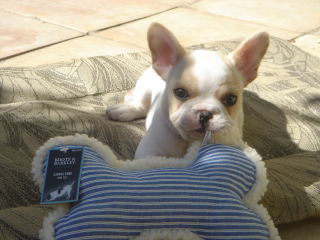
Aside from the obvious answer — not before you are ready — the time to get a dog is when you have completed your doggy education. And when the pup is ready.
An important consideration is the age of the pup. Most puppies change homes at some time in their life, usually from the home where they were born to the homes of their new human companions. The optimal time for a puppy to change homes depends on many variables, including his emotional needs, his all-important socialization schedule, and the level of doggy expertise in each household.
Leaving home can be traumatic, and limiting the pup's emotional trauma is a prime consideration. If the puppy leaves home too early, he will miss out on early pup-pup and pup-mother interactions. And since the first weeks in a new home are often spent in a doggy social vacuum, the developing puppy may grow up undersocialized toward his own kind. On the other hand, the longer the puppy stays in his original home the more attached he becomes to his doggy family and the harder the eventual transition. A delayed transition also postpones all-important socialization with the new family.
Eight weeks of age has long been accepted as the optimal time to acquire a new pup. By eight weeks, sufficient dog-dog socialization has taken place with mother and littermates to tide the puppy over until he is old enough to safely meet and play with other dogs in puppy class and dog parks. Yet the puppy is still young enough to form a strong bond with the human and canine members of his new family.
The relative level of doggy expertise in each home is a vital consideration in determining whether the puppy is better off staying longer in his original home or leaving earlier to live with his new owners. It is often assumed that breeders are experts and owners are rank novices, so that it makes sense to leave the pup with the breeder as long as possible. A conscientious breeder is usually better qualified to socialize, housetrain, and chewtoy-train the puppy. When this is true, it makes sense to get the puppy when he is older. (In fact, I often ask novice owners whether they have considered a socially mature and well-trained adult dog as an alternative to a young pup.)
This of course presupposes the breeder's superior expertise. Unfortunately, just as there are excellent, average, novice, and irresponsible owners, there are also excellent, average, novice, and irresponsible breeders. With the combination of an experienced owner and a less-than-average breeder, the puppy would be better off moving to his new home as early as possible, certainly by six to eight weeks at the latest. If you feel you are a qualified puppy raiser but the breeder will not let you take your pup home before eight weeks of age, look elsewhere. Remember, you are searching for a puppy to live with you, not with the breeder. In fact, you might be better off looking elsewhere anyway, since a less-than-average breeder probably produces less-than-average puppies.
Adapted from BEFORE You Get Your Puppy by Dr. Ian Dunbar
Where to Get a Puppy

Whether selecting your prospective pup from a professional breeder or from a family breeding a litter for the very first time, the criteria are the same.
First, look for puppies raised indoors around human companionship and influence. Avoid pups raised in an outdoor run or kennel. Remember, you want a puppy to share your home, and so look for a puppy that has been raised in a home. See Choosing Your Puppy: How To Select A Good Breeder
Second, assess your prospective puppy's current socialization and education status. Regardless of breed, breeding, pedigree, and lineage, if your prospective puppy's socialization and training programs are not underway well before eight weeks of age, he is already developmentally retarded.
Adapted from BEFORE You Get Your Puppy by Dr. Ian Dunbar
Puppy vs. Adult
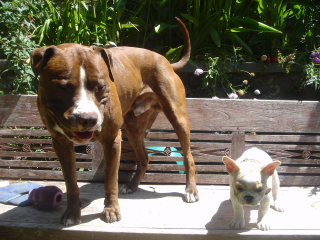
Before rushing ahead and getting a puppy, it's a good idea to at least consider the pros and cons of adopting an adult dog. There are certainly several advantages to getting a pup, the foremost being you may mold the puppy's behavior and temperament to suit your own particular lifestyle. This, of course, presumes you know how to train and have the time to do it. Sometimes you might not. And so in a lot of ways an adolescent or adult dog with a Kennel Club obedience title and a Canine Good Citizenship Test may make a more suitable companion — especially for a two-income family whose members barely have the time to get together as a family themselves.
Additionally, a two-year-old (or older) adult dog's habits, manners, and temperament are already well established, for better or for worse. Traits and habits may change over time, but compared with the behavioral flexibility of young puppies, an older dog's good habits are as resistant to change as their bad habits. Consequently, it is possible to test drive a number of adult shelter dogs and select one free of problems and with an established personality to your liking.
Adopting an adult dog from an animal shelter or rescue organization can be a marvelous alternative to raising a puppy. Some shelter and rescue dogs are well-trained and simply need a home. Others have a few behavior problems and require remedial puppy education in adulthood. However, other dogs have significant problems, such as generalized fearfulness, that will require months and months of dedicated rehabilitation. Some dogs are purebred; most are mixed breeds. The key to finding a good shelter or rescue dog is selection, selection, selection! Take plenty of time to test drive each prospective candidate. Each dog is unique.
If you still have your heart set on raising and training a puppy, do make sure you educate yourself beforehand. Only search for a puppy after you have learned how to raise and train one. Remember, it takes only a few weeks to ruin an otherwise perfect puppy.
Please ask yourself, “Where do shelter dogs come from?” All shelter dogs were once perfect puppies that were abandoned or surrendered because they developed annoying behavior, training, and temperament problems, simply because their owners did not know how to train them.
The sequence of events is utterly predictable: too much initial freedom and too little supervision and education all but teach a newly acquired puppy to chew household articles and eliminate in the house. In the owner’s attempt to manage these common and foreseeable problems, the puppy is relegated outdoors, where he quickly becomes de-socialized and develops other annoying habits, such as barking, digging, and escaping. After spending day after day in social isolation, the puppy is so excited when asked indoors that he enthusiastically runs around, barks, and jumps up to greet his long-lost human companions. Soon, the overly rambunctious pup is no longer allowed indoors at all. Either he is captured by animal control after he escapes from solitary confinement, or neighbors complain about his excessive barking and he is confined to the garage or basement — usually only a temporary measure before the now unwanted adolescent dog is abandoned or surrendered to a shelter. And he is barely six months old.
All behavior, temperament, and training problems are so utterly predictable, and so easily preventable. Even most existing problems may be resolved fairly easily. Education is the key.
Adapted from BEFORE You Get Your Puppy by Dr. Ian Dunbar
A good place to search for the right dog for you is the Dogtime matchup.
How to Select a Good Breeder
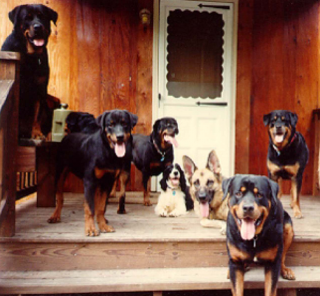
A good breeder will be extremely choosy in accepting prospective puppy buyers. A prospective owner should be equally choosy when selecting a breeder. A prospective owner can begin to evaluate a breeder's expertise by noting whether she ranks the puppies' mental well-being and physical health above their good looks. Assess several factors:
· whether your prospective puppy's parents, grandparents, great-grandparents, and other relations live to a ripe old age
· whether the breeder's adult dogs are all people-friendly and well-trained
· whether your prospective pup is already well-socialized and well-trained, i.e., evaluate the breeder’s socialization and training program.
Basically, this breeder is under the impression the dog is so dumb he can not tell the difference between two simple instructions such as "Sit" and "Stand." Look elsewhere. Just because the breeder is prepared to live with dogs that haven't even been taught to sit does not mean to say you should! Also, if the puppy hasn't even been taught basic manners, there are probably many other things the breeder has failed to teach.
Longevity
The single best indicator of general health, good behavior, and temperament is the overall life expectancy of a kennel line. Long-lived dogs advertise good temperament and training, since dogs with behavior and temperament problems generally have short life expectancies. Check to see that your prospective puppy's parents, grandparents, great-grandparents, and other relations are still alive and healthy, or that they died at a ripe old age. Conscientious breeders will have telephone numbers readily available of previous puppy buyers and of the breeders of the other dogs in your prospective puppy's pedigree. If the breeder is not eager to share information regarding life expectancy and the incidence of breed-specific diseases, look elsewhere. You will eventually find a breeder who will accommodate your concerns. Before you open your heart to a young pup, you certainly want to maximize the likelihood that the two of you will be spending a long and healthy life together.
Meet The Parents
Meet and test-drive as many of your prospective puppy's adult relatives as possible. Friendly dogs are self-apparent when you meet them. Friendly dogs are living proof of good socialization by a good breeder.
Beware the breeder who is only willing to show you puppies.
A good breeder will take the time to see how you get along with adult dogs before letting you anywhere near the pups.
A good breeder wouldn't let you leave with a puppy if you didn't know how to handle an adult dog, which your puppy will be in just a few months. Make sure the breeder teaches you how to handle and train her adult dogs.
You want to evaluate as many adult dogs as possible from your prospective puppy's family and line before you let a litter of super-cute puppies steal your heart. If all the adult dogs are people-friendly, well behaved and well trained, it is a good bet that you have discovered an exceptional breeder with exceptional dogs.
Assess Socialization & Training Program
Observe: Are the puppies being raised indoors?
Is there a specific doggy toilet in the puppies' living area?
How many piles and puddles are in the toilet versus on the floor? This will offer a good indication of where the puppy will eliminate if she comes to your home.
How many hollow chewtoys (such as Kongs, Biscuit Balls, Squirrel Dudes, or sterilized bones) stuffed with kibble and treats can you see in the puppies’ play area?
Ask the breeder:
To demonstrate the puppies' basic obedience skills, for example, to come, sit, lie down, and roll over
How many people have handled and gentled the pups daily?
How many children, men, and strangers have trained, and played with the pups daily?
Have the pups been exposed to loud and unexpected noises, such as adults shouting, children crying, television (male voices shouting and screaming on ESPN), radio, and music (Country, Rock, and Classical—maybe Tchaikovsky's 1812 Overture)?
For a progress report on the litter's ongoing errorless housetraining and chewtoy-training program.
Remember: You are choosing a pup to come and live in your home and adapt to your lifestyle, so please make sure the puppy has been prepared for domestic life in general and is suitable for your lifestyle in particular.
Beware of statements like:
"We haven't taught the puppies to sit because they are showdogs." or "He's the scaredy-cat of the litter."
Certainly in any litter individual dogs will display different tendencies toward approaching strangers (you), but no eight-week-old puppy should be scared to approach people. Any shyness, fearfulness, or tendency to avoid people should have been noticed and dealt with as early as four weeks ago. The shy puppy should have been supersocialized. A single scaredy-cat puppy in a litter indicates that the breeder has not been vigilant in assessing day-to-day socialization. There are most probably other good puppies in the litter, but I suggest that you be vigilant when assessing their socialization status.
Adapted from BEFORE You Get Your Puppy by Dr. Ian Dunbar
How to Select a Good Puppy

When choosing the puppy, it is so important that all family members agree. You want to select the puppy you all like best, and you want to select a puppy that likes all of you. Sit down quietly as a family and see which puppies make contact first and which ones stay around the longest.
You want to select a puppy that likes you and enjoys being hugged and handled (restrained and examined). You want to select a puppy who is socialized, confident, housetrained, chewtoy-trained, and obedience trained.
Social Attraction
For years it was dogmatically stated that puppies that approached quickly, jumped-up, and bit your hands were totally unsuitable as pets, since they were aggressive and difficult to train. On the contrary, these are normal, well-socialized, eight-week-old puppies, which are simply saying hello in true puppy fashion without the benefit of manners. With some very basic training to redirect the pup's delightful exuberance, you'll have the fastest recalls and the quickest sits in puppy class. Also, puppy biting is both normal and absolutely necessary. In fact the more dogs bite as puppies, the softer and safer their jaws in adulthood.
I would be more concerned about puppies that were slow to approach or remained in hiding. It is completely, utterly, and absolutely abnormal for a well-socialized six- to eight-week-old puppy to be shy when approaching people. If the puppy acts shy or scared, then without a doubt he has not been sufficiently socialized. Look elsewhere. If, however, you really have your heart set on taking a shy puppy, only do so if each family member can coax the pup to approach and take a food treat. A shy puppy represents a substantial time commitment, since he will need to be hand-fed kibble every day from a variety of strangers. To rehabilitate this pup, you'll certainly have your work cut out for you during the next four weeks.
Make sure the puppy quickly and happily approaches all family members.
Handling and Gentling
Your prospective puppy should feel thoroughly at ease being handled by strangers — you and your family. Handle each puppy to see how he enjoys being cuddled (gently restrained) and stroked and massaged (examined) around his neck, muzzle, ears, paws, belly, and rear end. Your puppy should relax like a rag doll. If the puppy struggles, see how long it takes for the pup to calm down.
Make sure all family members handle the puppy.
Sound Sensitivity
Exposure to a variety of sounds should commence well before the eyes and ears are fully opened, especially with sound-sensitive dogs, such as herding and obedience breeds. It is quite normal for puppies to react to noises. What you are trying to evaluate is the extent of each pup's reaction and the pup’s bounce-back time. For example, we expect a puppy to react to a sudden and unexpected loud noise, but we do not expect him to go to pieces. Judge whether the puppy reacts or overreacts to sounds, and time how long it takes for the puppy to approach and take a food treat (the bounce-back time). Expect immeasurably short bounce-back times from bull breeds, and short bounce-backs from working dogs and terriers, but be prepared for longer bounce-back times from toys and herding breeds. Regardless of a dog's breed or type, however, excessive overreaction, panic, or extremely lengthy bounce-back times are all proof of insufficient socialization. Unless successfully rehabilitated, such pups may become extremely reactive when they grow up.
Evaluate the puppies' response to a variety of noises: people talking, laughing, crying, and shouting, a whistle, a hiss, or a single hand clap.
Household Etiquette
If the puppies have no available toilet and the entire puppy area has been covered with sheets of newspaper, the puppies will have developed a strong preference for going on paper and will need specialized housetraining in their new home. Moreover, if there is no toilet and the entire area has been littered with straw or shredded paper, the puppies will have learned they may eliminate anywhere and everywhere, which is what they will do in your home. The longer the puppy has been raised in these conditions, the more difficult she will be to housetrain.
Try to observe the litter for at least two hours and pay attention to where each puppy eliminates and what each puppy chews.
Basic Manners
Evaluate each puppy's response to your lure/reward training attempts using pieces of kibble or chewtoys as lures and rewards. Make sure each family member trains the puppy to come, sit, lie down, stand and rollover.
Singleton Puppies
Most pups have adequate opportunity to play with their littermates during their first eight weeks. Singleton and hand-reared pups have had insufficient opportunity to play (play-fight and play-bite) and therefore teaching bite inhibition is a top priority. If you select a singleton puppy, make sure you enroll in a puppy classes as soon as your puppy reaches three months of age. Play and socialization are essential for puppies to develop and maintain a soft mouth.
Adapted from BEFORE You Get Your Puppy by Dr. Ian Dunbar